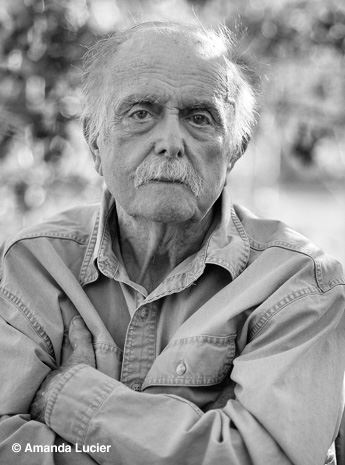
Alvin Lucier (1931 - 2021)
Alvin Lucier’s emergence as one of America’s foremost experimentalists was probably not due to his earliest musical encounters growing up in New Hampshire. But thanks to his father (an amateur violinist) and mother (who played the piano), Lucier heard a lot of music. Most of it was the popular music of the time, but he was also exposed to so-called ‘serious’ music and, as he began to explore the music of his own time, Igor Stravinsky became an early hero, as he was for so many other aspiring composers of his generation.
After graduating from Yale in 1954, by which point he had already composed numerous works including a piano sonatina, a Kyrie for girls’ chorus and organ, and a hefty partita for flute, harpsichord and strings, Lucier studied with Aaron Copland and Lukas Foss at the Tanglewood Center. He spent two years in Rome on a Fulbright Fellowship, from 1960 to 1962, where he became enthralled with the avant-garde sound worlds of Luigi Nono, Pierre Boulez and Karlheinz Stockhausen. Of greater impact at that time, however, was his attending a performance by John Cage and David Tudor. Soon after returning to the United States, Lucier took an academic job at Brandeis University, in a suburb of Boston, where he also conducted the Brandeis University Chamber Chorus. At a 1963 New York Town Hall concert featuring the chorus, Lucier met two like-minded contemporaries, Robert Ashley and Gordon Mumma, which led to their formation – together with a fourth composer, David Behrman – of the Sonic Arts Union, a composition collective dedicated to exploring the nature of sound. That exploration became his life’s calling.
Over the past six decades, Lucier resolutely focused on acoustic phenomena and how listeners perceive it. Realising musical material out of everything from amplified vases (Music for Cello with One or More Amplified Vases, 1992), clocks (Clocker, 1978), or a chest of drawers (Job’s Coffin, 1980) to his own brain waves (in his breakthrough Music for Solo Performer from 1965), Lucier created a copious body of work which challenges some of the most fundamental definitions of music and performance. Lucier’s most famous – some might say infamous – work is undoubtedly his 1969–70 electroacoustic ‘I am sitting in a room’.
But despite his attraction to unexpected sound sources, Lucier also composed formidable, albeit unconventional, string quartets (Navigations, 1991; Disappearances, 1994) as well as several orchestral pieces (e.g. Diamonds, 1999, and Slices, 2007), and almost certainly the most significant work ever scored for solo triangle (Silver Streetcar for the Orchestra, 1988). He even composed music derived from the Beatles’ song ‘Strawberry Fields Forever’ (Nothing is Real, 1990) – although admittedly one of the sound sources used to transform fragments from that famous Lennon and McCartney melody is an amplified teapot!


 Grand Piano has gained a reputation for producing high quality recordings of rare keyboard gems. Dedicated to the exploration of undiscovered piano repertoire, the label specialises in complete cycles of piano works by many lesser-known composers, whose output might otherwise have remained unknown and unrecorded.
Grand Piano has gained a reputation for producing high quality recordings of rare keyboard gems. Dedicated to the exploration of undiscovered piano repertoire, the label specialises in complete cycles of piano works by many lesser-known composers, whose output might otherwise have remained unknown and unrecorded.






